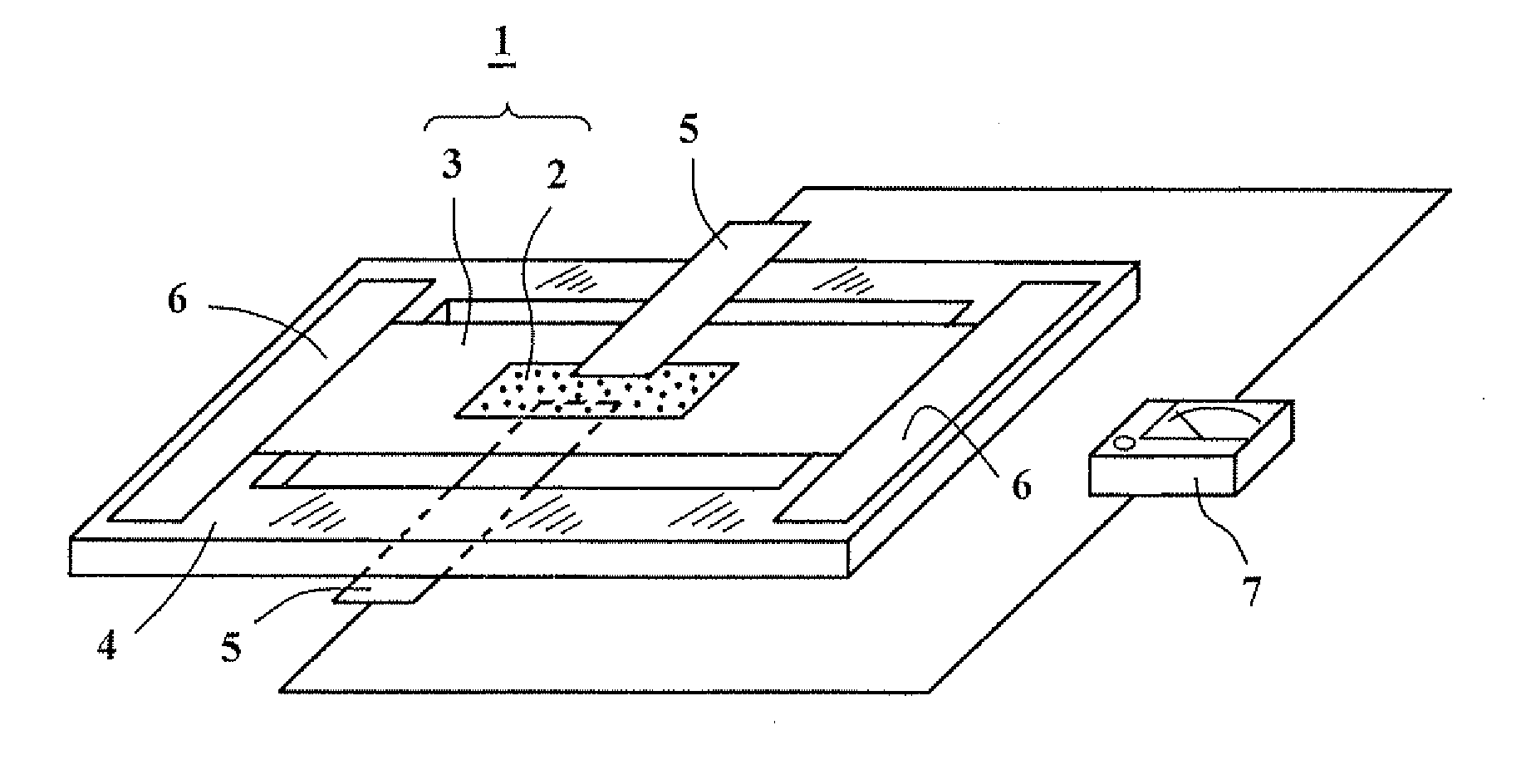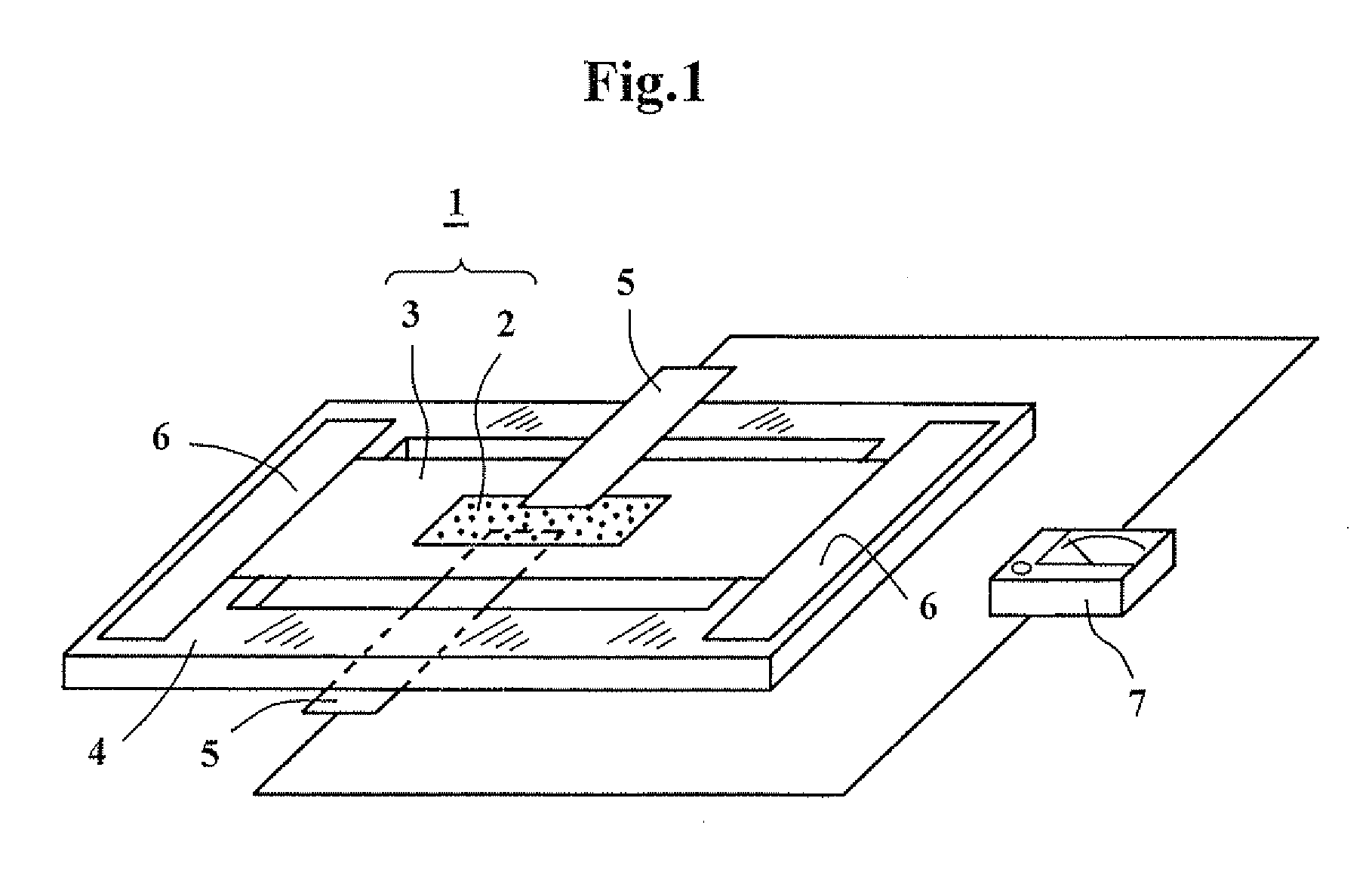Dielectric material for polymeric actuator, and polymeric actuator using the same
- Summary
- Abstract
- Description
- Claims
- Application Information
AI Technical Summary
Benefits of technology
Problems solved by technology
Method used
Image
Examples
synthetic example 1
Production of polymethyl methacrylate-b-poly n-butylacrylate-b-polymethyl methacrylate
[0067]At first, toluene, which is guaranteed-grade toluene and available from Kishida Chemical Co., Ltd, methyl methacrylate available from Kuraray Co. Ltd., n-butyl acrylate, which is guaranteed-grade n-butyl acrylate and available from Kishida Chemical Co., Ltd. were pre-treated as follows; toluene, methyl methacrylate and n-butyl acrylate were each brought into contact with Zeolum to remove a polymerization inhibitor, and then nitrogen gas was fully bubbled to purge dissolved oxygen.
[0068]To a one-litter three-necked flask, a three-way stopcock was attached and the inner portion was degassed and replaced with dry nitrogen gas. 400 g of the pretreated toluene, 0.94 ml of N,N,N′,N″,N″-pentamethyl diethylene triamine available from Aldrich, it was used after vacuum distillation) and 18 mL of toluene solution containing 11 mmol of isobutyl-bis-(2,6-di-t-butyl-4-methyl phenoxy) aluminum available fro...
synthetic example 2
Preparation of Cross-Linked Poly n-butyl Acrylate Film (C-3)
[0073]10 g of n-butyl acrylate, 0.18 g of, 6-hexane diol diacrylate, 65 mg of di-t-butyl peroxide and 65 mg of azobisisobutyronitrile were mixed to form a homogeneous solution. This solution was filled into a space enclosed by two glass plates and a silicone rubber spacer. Under this condition, polymerization was carried out at 60° C. for 4 hours and then at 100° C. for 12 hours. The thickness of the film could be arranged by changing the thickness of the silicone rubber spacer. 125 μm (actual measurement value) thickness film was used for polymer actuators and 1.23 mm (actual measurement value) thickness film was used to determine their physical properties.
[0074]Physical properties of poly n-butyl acrylate obtained above and acryl elastomer film VHB Y-4950 available from 3M Company, are shown in Table 2.
TABLE 2Various physical propertiesPolymerC-3C-4Physical PropertiesTα or Tg (° C.)−37 −24* Microphase SeparationAbse...
synthetic example 3
Synthesis of n-butyl Acrylate Oligomer
[0075]Into a two-liter three-necked flask, 166.7 g of n-butyl acrylate, 666.7 g of methyl ethyl ketone, 23.8 g of dodecanthiol, 10.8 mg of azoisobutyronitrile were added, and then the flask was fully flushed with nitrogen gas. Then the flask was immersed into a water bath at 60° C. and polymerization was carried out with stirring. After 5 hours from the initiation of polymerization, 5 mg of azoisobutyronitrile was added and polymerization was further continued for another 10 hours. From the obtained solution, methyl ethyl ketone, n-butyl acrylate, dodecanethiol were distilled away under reduced pressure. Further, the obtained liquid was dried under a vacuum at 150° C. for two full days and nights. The number-average molecular weight (Mn) and the molecular weight distribution (Mw / Mn) of the resulting liquid-like n-butyl acrylate oligomer were 1,625 and 1.48, respectively. This oligomer was used as a plasticizer.
PUM
| Property | Measurement | Unit |
|---|---|---|
| Percent by mass | aaaaa | aaaaa |
| Dielectric polarization enthalpy | aaaaa | aaaaa |
| Electrical conductor | aaaaa | aaaaa |
Abstract
Description
Claims
Application Information
 Login to View More
Login to View More - R&D
- Intellectual Property
- Life Sciences
- Materials
- Tech Scout
- Unparalleled Data Quality
- Higher Quality Content
- 60% Fewer Hallucinations
Browse by: Latest US Patents, China's latest patents, Technical Efficacy Thesaurus, Application Domain, Technology Topic, Popular Technical Reports.
© 2025 PatSnap. All rights reserved.Legal|Privacy policy|Modern Slavery Act Transparency Statement|Sitemap|About US| Contact US: help@patsnap.com


